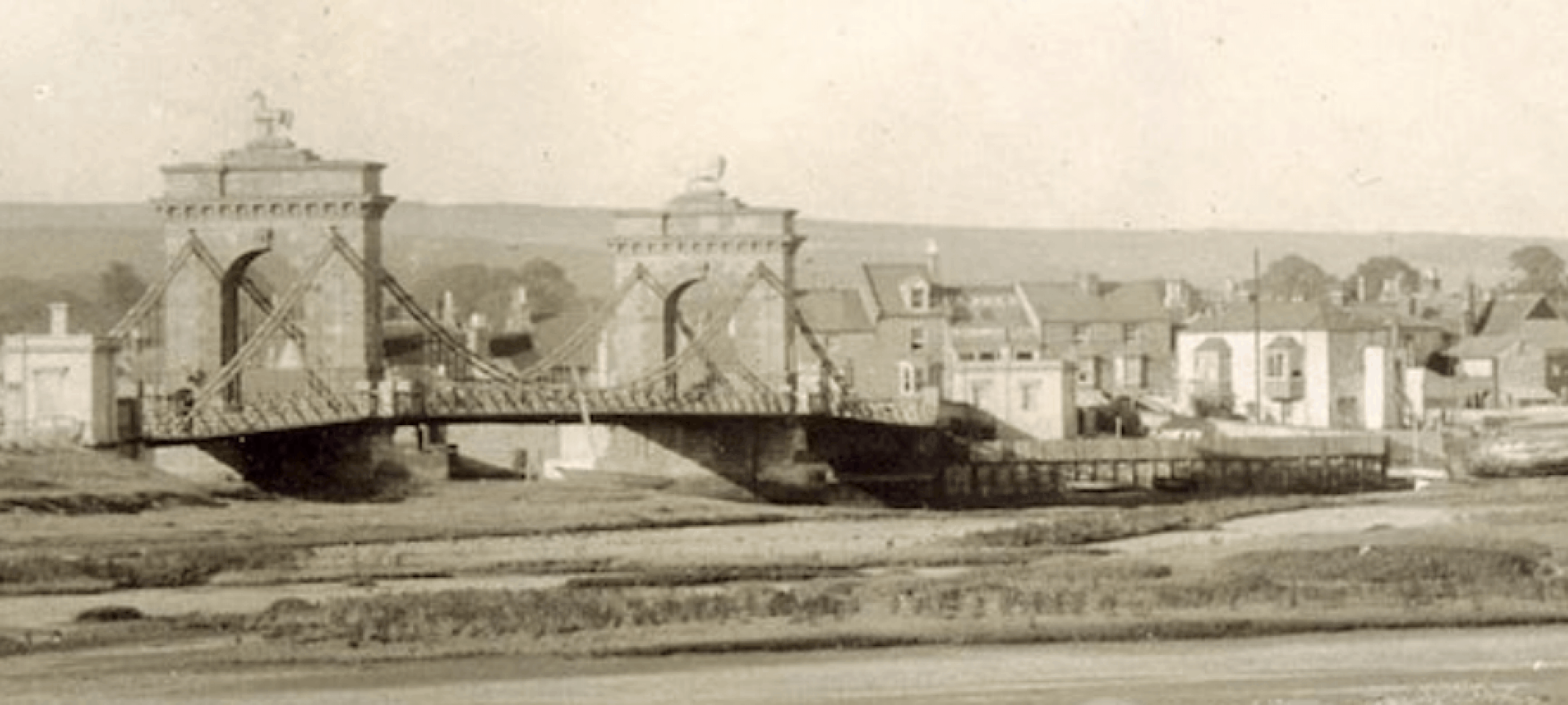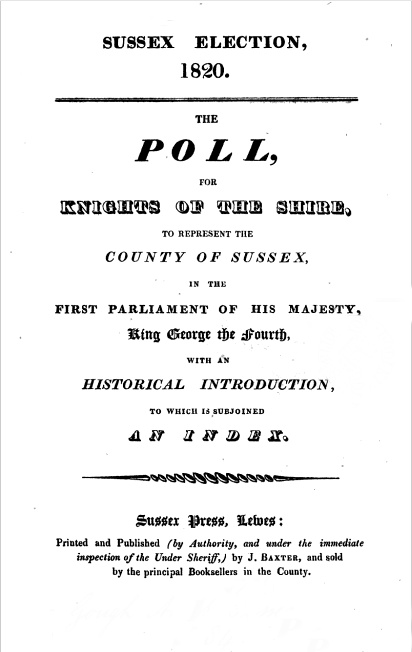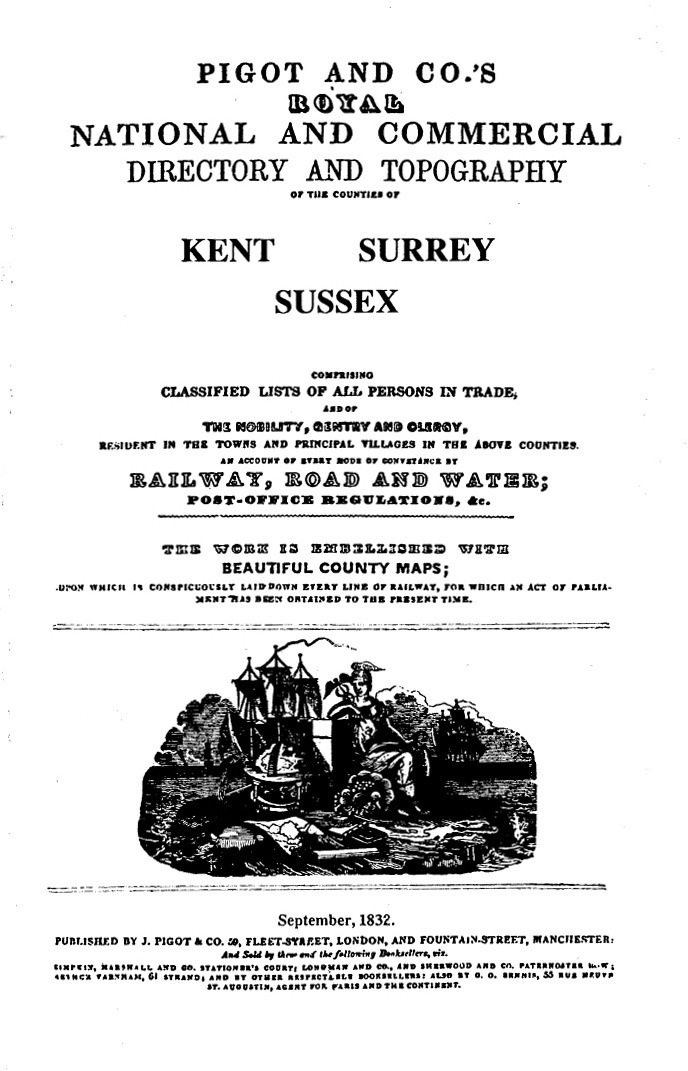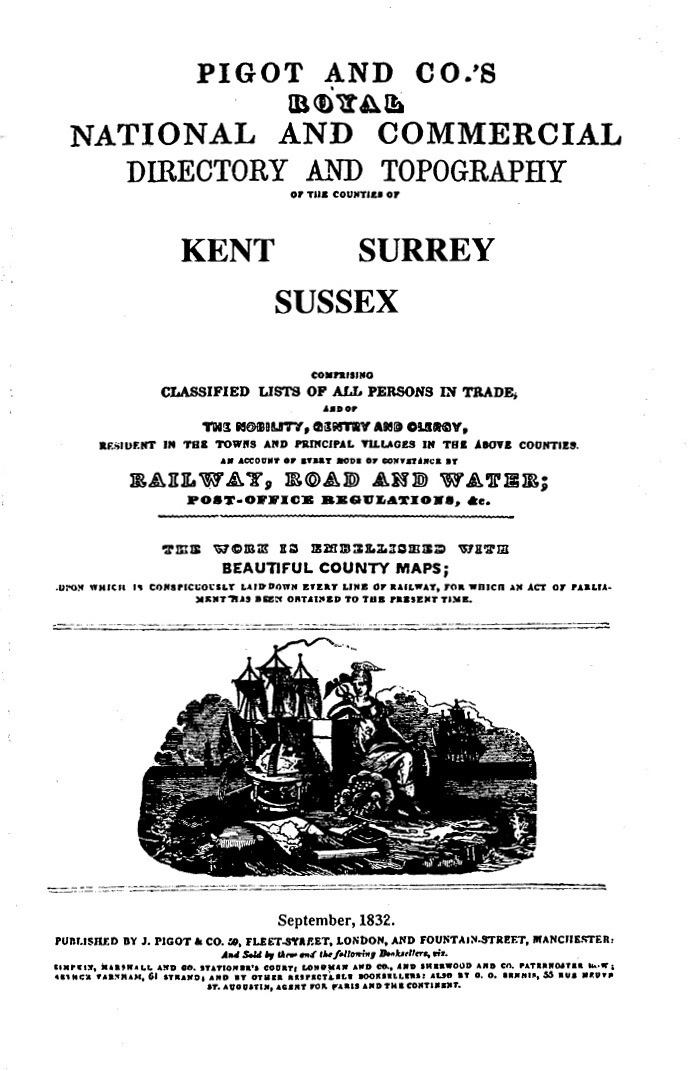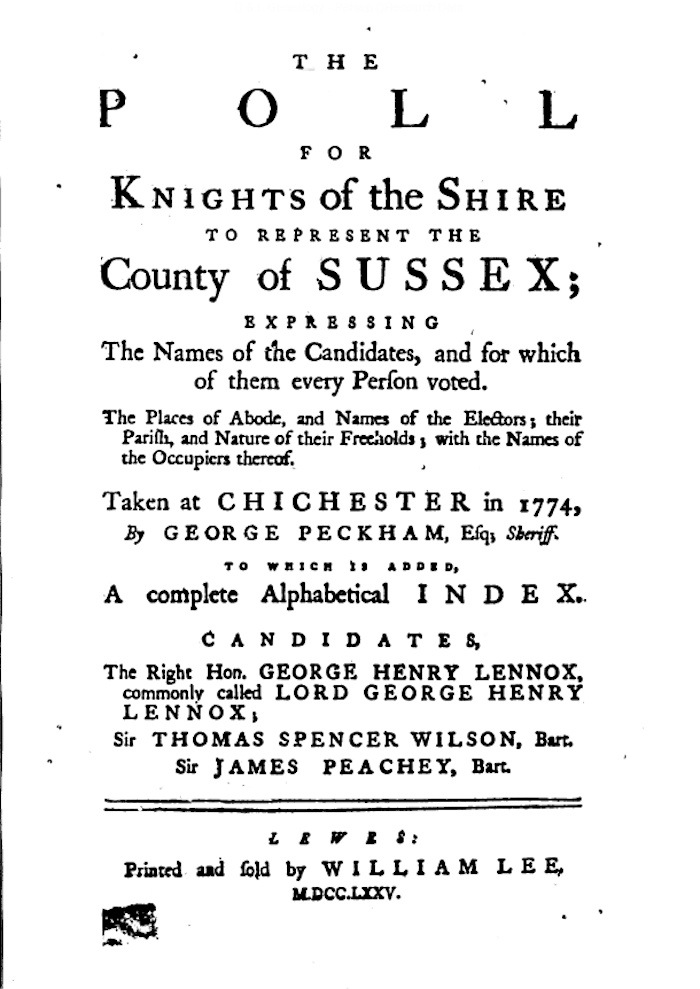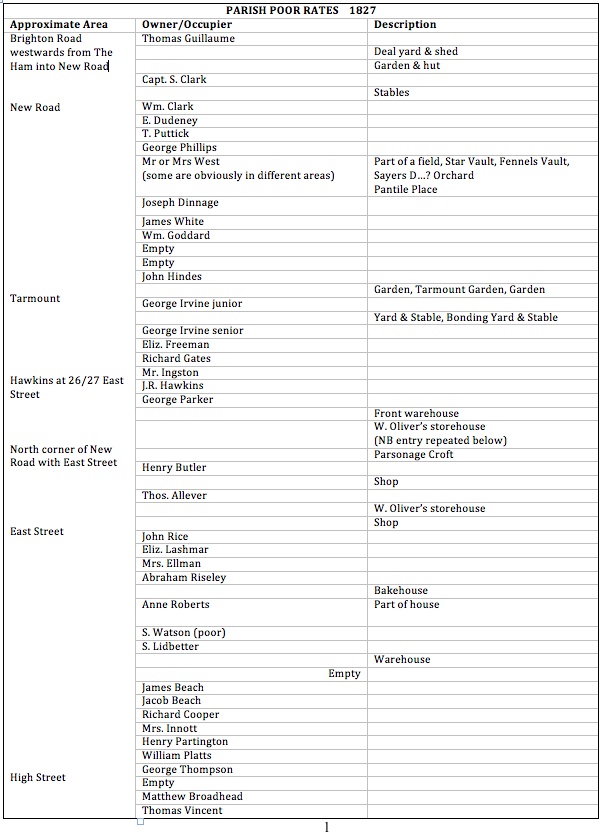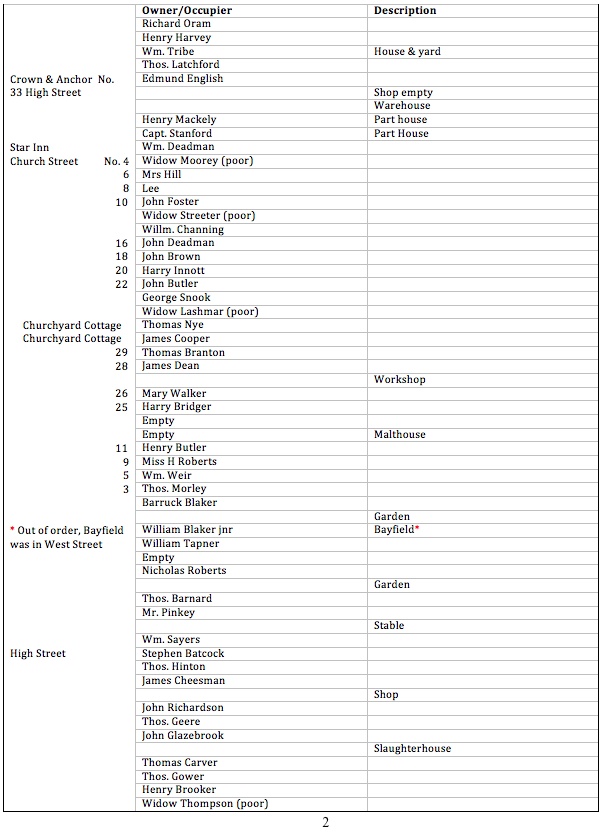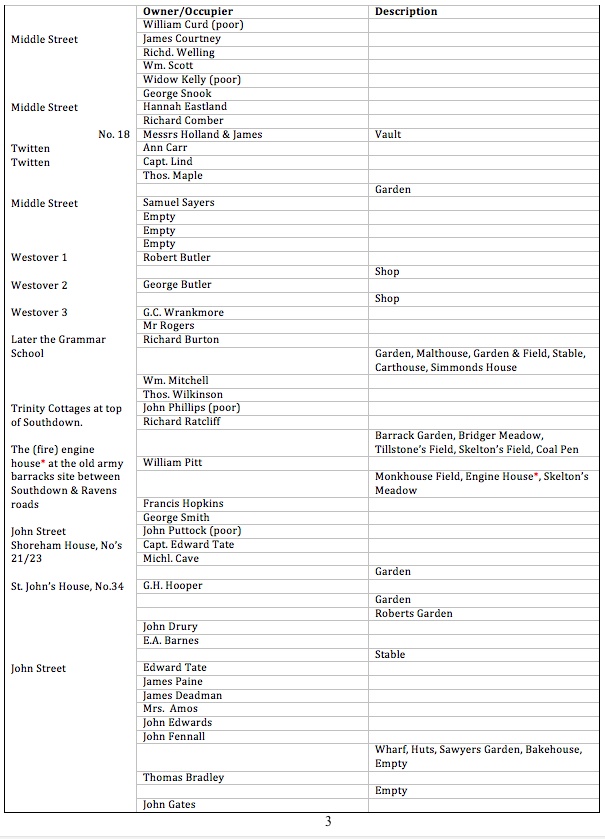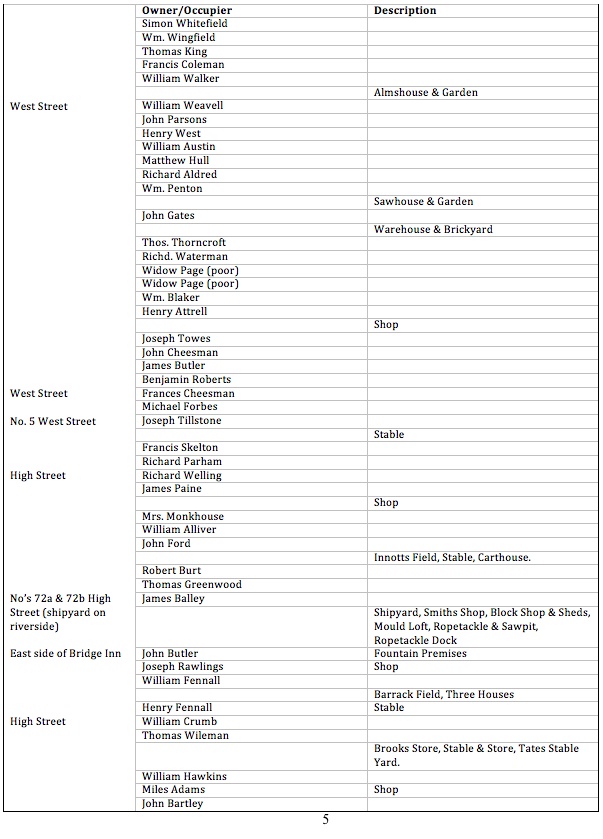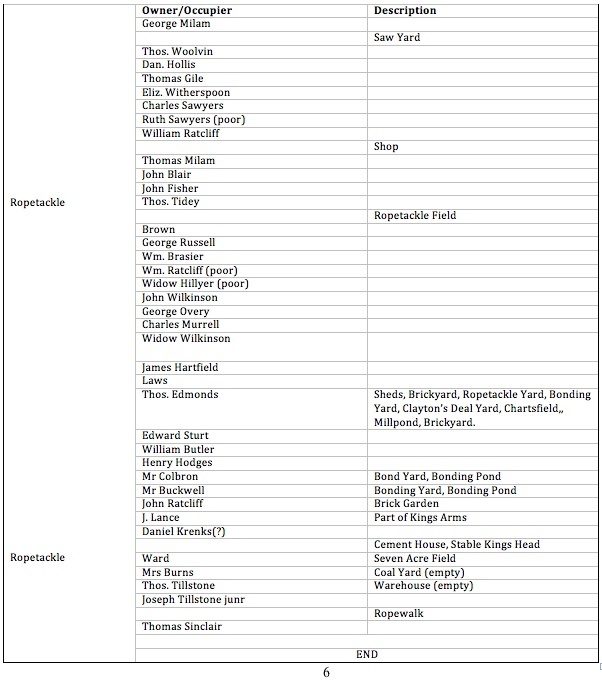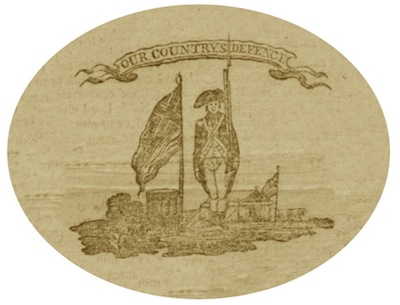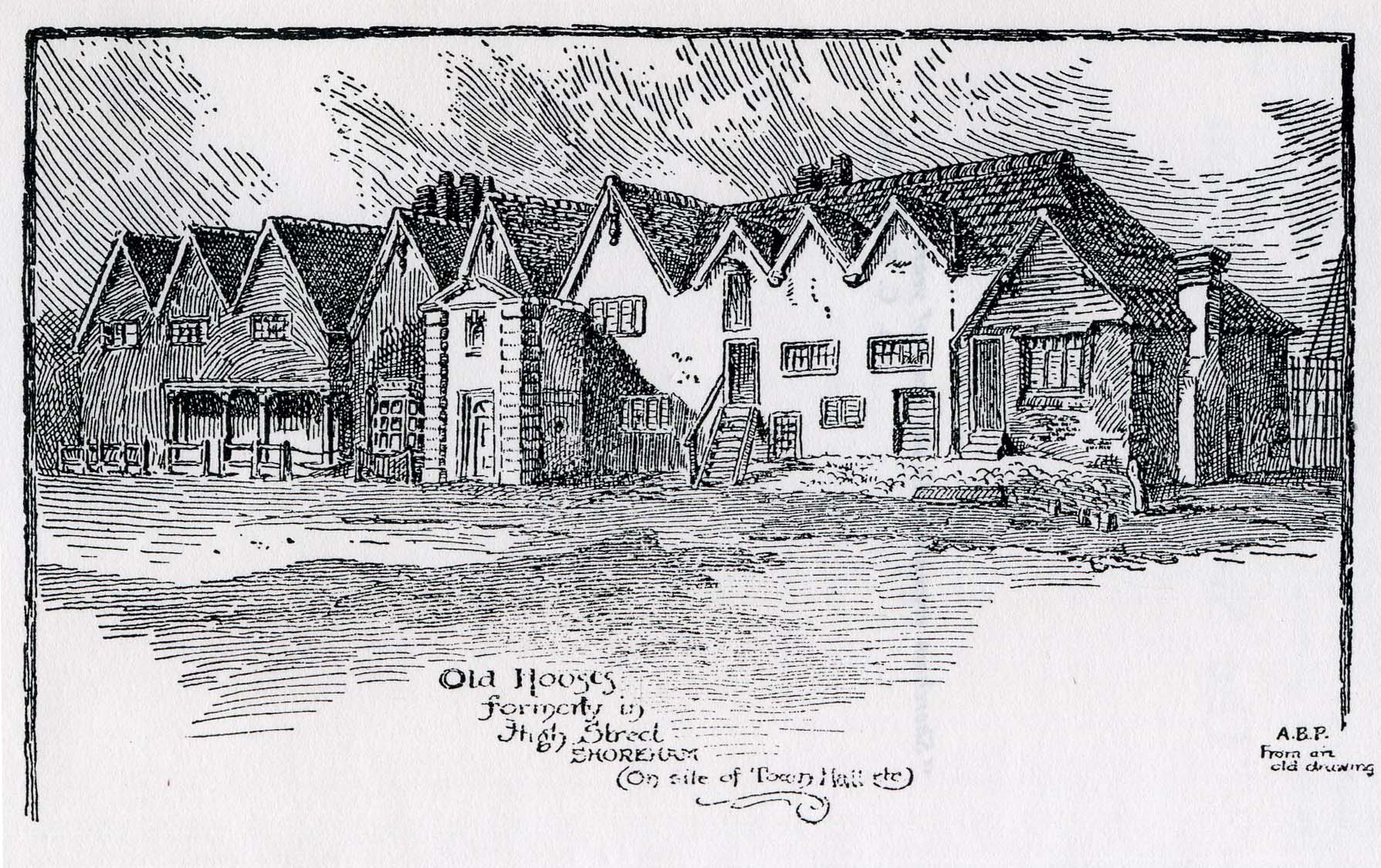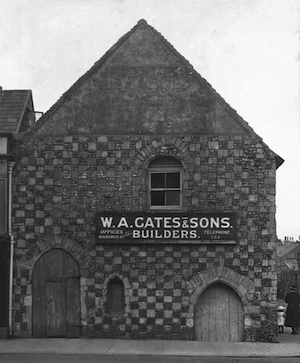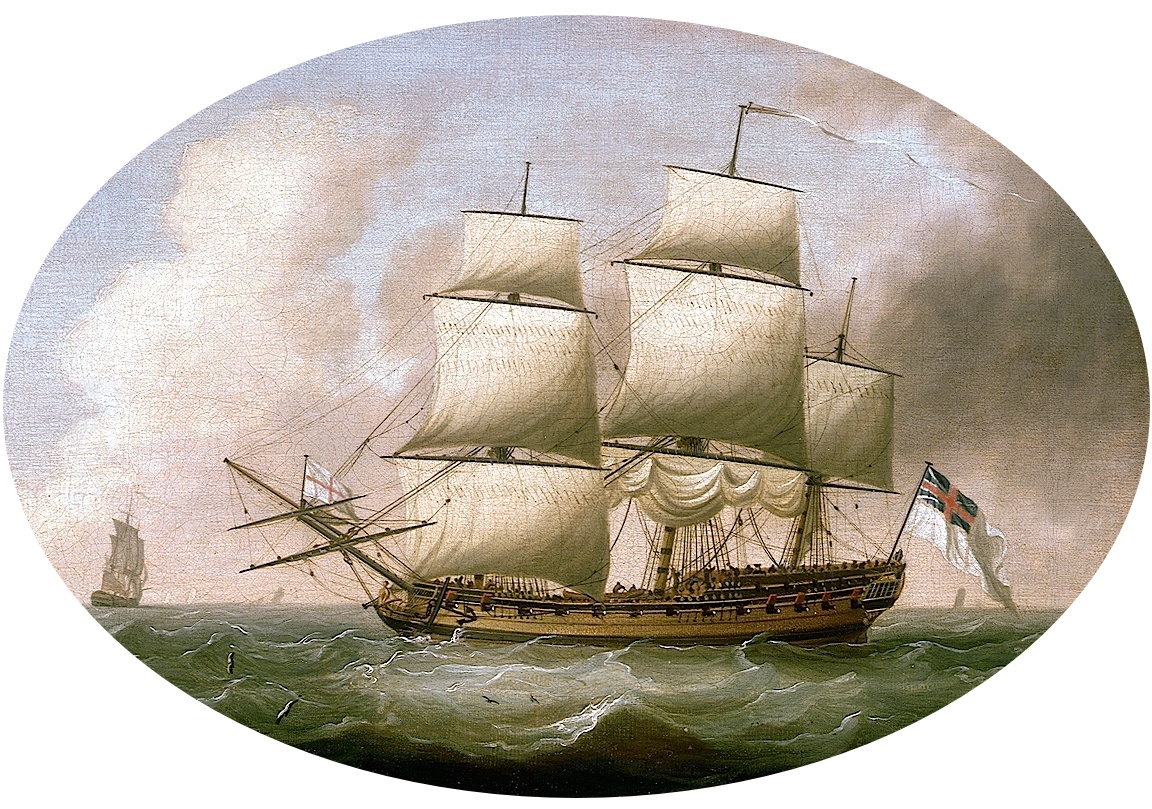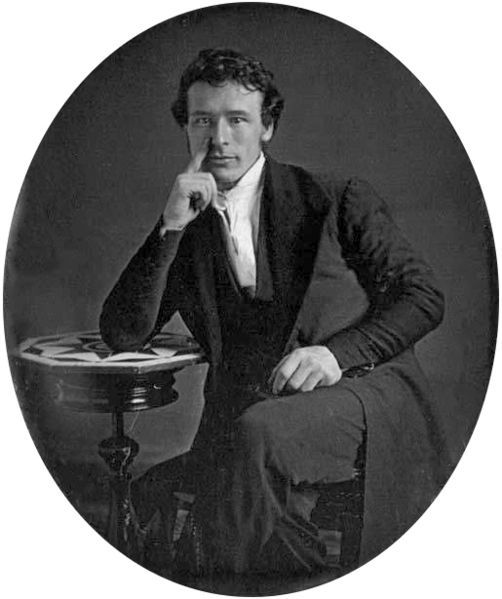Transcript of Owners and Occupiers Living in or Owning Freehold Property in Shoreham (and Kingston), Southwick, Lancing and Sompting as shown within Bramber Rape.
Compiled from The Poll for Knights of the Shire 1820
Candidates
A = Walter Burrell, Esq., of West Grinstead Park
B = Edward Jeremiah Curteis, Esq., of Windmill Hill
C = Charles Compton Cavendish, Esq., of Compton Place
| Freeholder, His Abode and Vote | Freehold Location & Type | Occupier |
| Lucas William, Burpham C | Lancing, house | Cooper & others |
| Burry Henry, Sompting C | Sompting, house & land | Self |
| Kennard James, Sompting C | Sompting, house & land | Mr. Midhurst |
| Longley Edward, Lancing C | Lancing, house | Self |
| Bushby Thomas, Lancing C | Lancing, house & land | Mr. Hodges |
| Harwood William, Lancing C | Lancing, house | Self |
| Radcliffe John sen. New Shoreham C | New Shoreham, house & land | Self |
| Carver James, Lancing AC | Lancing, house & land | Self |
| Tate Henry, Sompting (vote not recorded) | Sompting, house & garden | Self |
| Hampton John, Lancing C | Lancing, house | Hodges |
| Cooper James, Lancing (vote not recorded) | Lancing, house | Unoccupied |
| Sowton John, Sompting C | Sompting, house | Mr. Knight |
| Bushby George, Sompting AB | Lancing, house & land | T. Bushby |
| Hill William, Sompting AB | Broadwater, land | Sandall |
| Carver Robert, Littlehampton C | Lancing, house & land | Gummery |
| Hall Nathaniel, Henfield AB | Southwick, land | Hall |
| Hillman Peter, Portslade AB | Southwick, house & land | Smith |
| Hobden D, Southwick AB | Southwick, house | Brown |
| Knight C, Southwick (vote not recorded) | Southwick, house | Frazier |
| Burton Richard, Cuckfield AB | Shoreham, house & land | Self & others |
| Lloyd J. Martin Esq., Lancing A | Lancing, house & land | Self |
| Rice John Esq., Shoreham AC | Worthing, house | Smith |
| Allen William, Lancing AC | Lancing, house | Self |
| Miller Thomas, Lancing AC | Lancing, house & land | Self |
| Allen Thomas, Lancing AC | Lancing, house | Self |
| Cooper James, Lancing C | Lancing, house & land | Unoccupied |
| Stubbs Hasted, Clayton AB | Lancing, house | Anderson & others |
| Groome Thomas, Steyning C | Sompting, land | Self |
| Hannington Smith, Brighton C | New Shoreham, house | M’Donald |
| Gorringe Wm. Esq., Kingston AB | Kingston, house & land | Self |
| Belling Francis, Sompting (vote not recorded) | Sompting, (property type not recorded) | (occupier not recorded) |
| Turner Thomas, Sompting AB | Lancing, house | Unoccupied |
| Dabbs William, Lancing AB | Lancing, house & land | Self |
| Blaker Nath., Lancing AB | Lancing, house | Self |
| Blaker James, Lancing AB | Lancing, house & land | Self |
| Stubbs William M, Sompting AB | Lancing, house | Self & others |
| Carr George, Shoreham (vote not recorded) | Shoreham, house | Pudwick & others |
| Sayers Samuel, Shoreham AB | Shoreham, house | Self |
| Roberts J.P. Esq., Hurstpierpoint AB
(perhaps John Pelham Roberts of Shoreham?) |
Hurstpierpoint, house
(but perhaps a mistake and should be Shoreham?) |
Custom House
(perhaps the Custom House in Church Street, Shoreham) |
| Roberts N. Esq., New Shoreham AB | New Shoreham, house | Gates |
| Weller William, New Shoreham AB | New Shoreham, house | Robson |
| Clagram William, New Shoreham AB | New Shoreham, house | Self |
| Tate George, New Shoreham AB | New Shoreham, house | Sayers |
| Lloyd James, New Shoreham AB | New Shoreham, house | Self |
| Innott Harry, New Shoreham AB | New Shoreham, house | Self |
| Hawkins John R., New Shoreham AB | New Shoreham, house | Self & others |
| Kent William, Old Shoreham (vote not recorded) | Old Shoreham, (property type not recorded) | (occupier not recorded) |
| Crumb William, New Shoreham AB | New Shoreham, house | Self |
| Broadhead Matt., New Shoreham (vote not recorded) | New Shoreham, house | Self |
| Butler John, New Shoreham AB | New Shoreham, house | Self |
| Willett John Ford, New Shoreham AB | New Shoreham, house | Self and another |
| Finnall William, New Shoreham AB | Old Shoreham, mill | Self & another |
| Finnall John, New Shoreham AB | Old Shoreham, mill | Self & another |
| Clayton Thomas, New Shoreham AB | New Shoreham, house | Self |
| Oliver Thomas, New Shoreham AB | New Shoreham, house | Kinnaird |
| Roberts Benjamin, New Shoreham (vote not recorded) | New Shoreham, garden | Self |
| Dedman John, New Shoreham AB | New Shoreham, house | Corbit |
| Lashmar William, Shoreham AC | Shoreham, house | Self |
| Dedman William, Shoreham AB | Worthing, house | Chelwich |
| Dedman James, Shoreham AB | Worthing, house | G. Dedman |
| Pain James, New Shoreham AB | New Shoreham, house | Self |
| Smith John, Brighton AB | Southwick, malt-house | Self & others |
| Gorringe W.P. Esq., Kingston AB | Southwick, house & garden | Longhurst |
| Tillstone Thomas, Shoreham AB | Shoreham, house | Self |
| Fuller Hugh, Old Shoreham AB | Washington, land | Self |
| Holmes Robert, Lancing AB | Lancing, land | Self |
| Chatfield John, Beeding AB | Shoreham, house | Ansell |
| Overington Thomas, New Shoreham C | Durrington, house & land | Self & others |
| Nealds Geo. Mich., Guildford C | South Lancing, house | Dabbs |
| Nevell John, Brighton C | South Lancing, house & land | Steele |
| Morley Thomas, New Shoreham C | New Shoreham, house | Self & others |
| Gates John, New Shoreham C | New Shoreham, house | Self & others |
| Streater James, Lancing AC | Lancing, house | Self & others |
| Cooper James, Shoreham C | Shoreham, house | Self & others |
| Skelton Francis, Shoreham C | Shoreham, house | Tilson & others |
| Winton Harry, Sompting AB | Sompting, house & land | Self |
| Hunt George, Brighton C | Southwick, house & land | Nigh |
| Parker John, Lancing C | Lancing, house & land | Self |
| Moffet John, Lancing C | Lancing, house | Sharp |
| Patrick Henry, Worthing AC | Lancing, house & land | Unoccupied |
| Hooper Rev. T. P., Sompting AB | Sompting, vicarage | Self |
| Ratcliffe John jun., Old Shoreham C | New Shoreham, house & land | Bennett |
| Martin Richard, Lancing AC | Lancing, house | Slaughter |
| Penfold James, Lancing AC | Durrington, land | Self |
| Hutchins Rev. N., New Shoreham (vote not recorded) | New Shoreham, vicarage | Self |
| Martin William, Lancing AC | Lancing, land | Short |
| Hawkins Henry, St. Mat., Midx AB | New Shoreham, land | Clayton |
| Mitchell James, Worthing C | New Shoreham, house & land | West & another |
